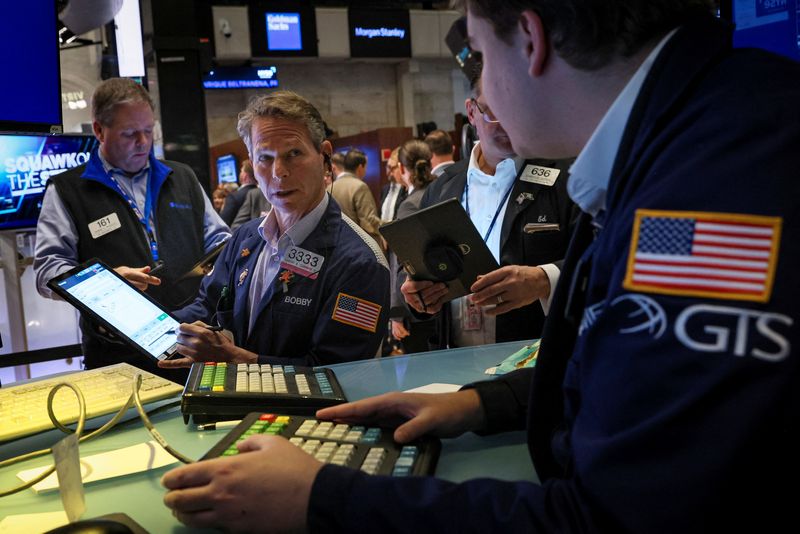By Amruta Khandekar and Ankika Biswas
(Reuters) -The tech-heavy Nasdaq came under pressure on Tuesday following declines in some megacap growth stocks and Tesla (NASDAQ:TSLA), while optimism around an economic recovery in China after the country further eased its COVID-19 curbs helped cap losses.
Tesla Inc tumbled 8.1% to hit a more than two-year low after Reuters reported that the electric vehicle maker plans to run a reduced production schedule at its Shanghai plant into January. The stock has lost more than two-thirds of its value this year.
Megacap growth stocks Apple Inc (NASDAQ:AAPL), Alphabet (NASDAQ:GOOGL) Inc and Amazon.com Inc (NASDAQ:AMZN) slipped between 1% and 1.5% as U.S. Treasury yields rose.
The declines made consumer discretionary and technology the worst performers among major S&P 500 sector indexes.
However, sectors closely tied to the economy, such as industrials, materials and energy, advanced, helping the Dow Jones to eke out gains.
"What you're seeing is a battle between investors who are doing year-end tax selling and investors that believe that normal inflows in January will lead to a better market," said Rick Meckler, partner at Cherry Lane Investments in New Vernon, New Jersey.
Meckler also pointed to thin trading volumes playing its part in market volatility.
Growth stocks have been under pressure this year from a rise in U.S. Treasury yields after the Federal Reserve embarked on an aggressive interest rate hike campaign to tame a surge in inflation, with investors turning to high dividend-yielding value stocks such as energy.
The S&P 500 growth index has tumbled 30% this year, compared with a 7% drop for the value index.
U.S.-listed shares of Chinese firms such as JD.Com Inc, Alibaba (NYSE:BABA) Group Holding Ltd and Pinduoduo Inc climbed between 2% and 3.8% after China said it would stop requiring inbound travelers to go into quarantine starting Jan. 8.
Investors are hoping for a so-called "Santa rally" at the end of what has been a largely disappointing month for U.S. equities.
The S&P 500 and the Nasdaq have lost around 5.7% and 9% so far in December and are on track for their biggest yearly loss since 2008 as the monetary policy tightening sparked worries of the economy tipping into a recession.
Economic data so far has offered little hope. Inflation has cooled further, but not enough to discourage the U.S. central bank from driving interest rates to higher levels next year.
Money markets are pricing in 59% odds of a 25-basis-point interest rate hike at the Fed's February meeting and expect rates peaking at 4.98% in May..
At 11:52 a.m. ET, the Dow Jones Industrial Average was up 133.48 points, or 0.40%, at 33,337.41, the S&P 500 was down 4.22 points, or 0.11%, at 3,840.60, and the Nasdaq Composite was down 83.89 points, or 0.80%, at 10,413.97.
Southwest Airlines (NYSE:LUV) Co shed 4.9% after cancelling thousands of flights, piling more pressure on the S&P 500.

Declining issues outnumbered advancers for a 1.01-to-1 ratio on the NYSE and 1.43-to-1 ratio on the Nasdaq.
The S&P index recorded five new 52-week highs and three new lows, while the Nasdaq recorded 61 new highs and 311 new lows.